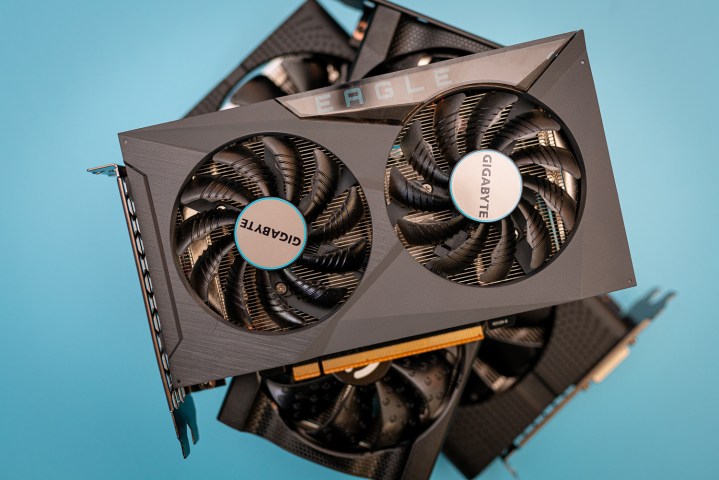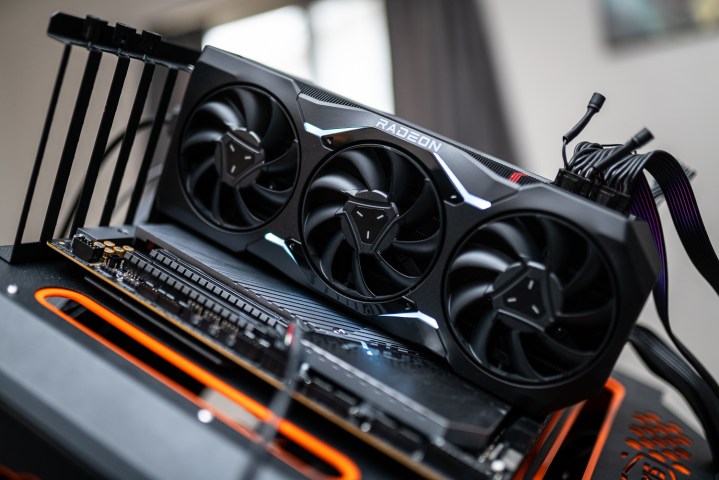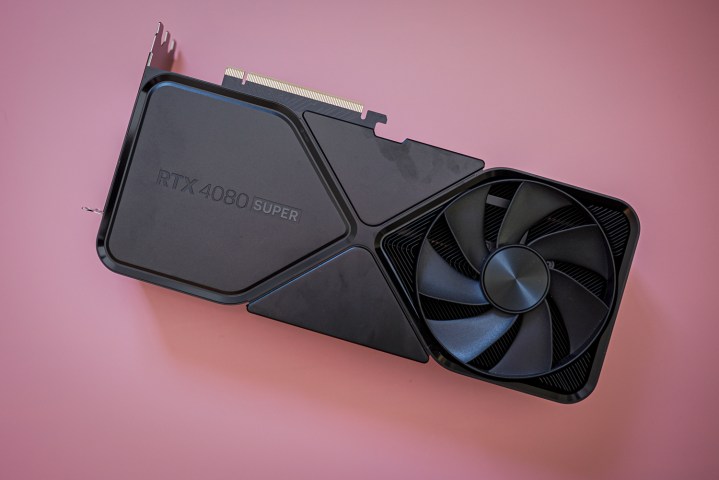
I suspect the RTX 4080 Super will be disappointing to some people. That doesn’t make much sense, considering the RTX 4080 Super will replace the base RTX 4080, but for a market fixated on generational improvements and small percentage wins, it looks like a disappointing GPU.
Nvidia set the bar low, claiming performance improvements in the low single digits. The tests I ran for our RTX 4080 Super review show even smaller gains — around 1% on average, often rounded up from less than a single percentage point. So, what’s so super about this supposed Super refresh?
It’s all about the price. The RTX 4080 Super is $200 cheaper than the base model, coming in at $1,000. Performance matters — if the RTX 4080 Super was strictly slower, that would be a problem — but it matters so much less than price. The RTX 4080’s renewed lease on life at its new price brings up a host of interesting questions about how important value is for GPUs, and how performance always needs more context.
No bad GPUs

There are very few truly bad GPUs. New entries on the list of the worst GPUs of all time are few and far between, and in each generation, we might only see one truly bad graphics card. The most recent example that comes to mind is AMD’s RX 6500 XT, which struggled in performance due to its PCIe configuration.
In most cases, GPUs are disappointing because the price and performance are out of sorts. When reviewing a GPU, the focus is almost entirely on price and performance, and how that ratio is balanced. I’ve written previously about how important price is for a GPU review, and that remains true today. Other elements of a graphics card are easy to overcome. Too loud or hot? Buy a card from a different brand with a better cooler. Is it too big to fit in your case? Seek out a low-profile model.
There are other things to talk about — aspects like VRAM, which has been a focal point of GPU reviews over the past year, and architecture, which dictates how the card will behave in different circumstances. It all boils down to performance in these cases, though. When we see problems, it’s usually larger architectural issues that plague an entire generation of graphics cards, or asinine design decisions to save a bit of cash (I’m looking at you, RX 6500 XT).

Under normal circumstances, it’s all about the ratio between price and performance. Make no mistake, a price reduction can turn a bad GPU into a good one. That’s exactly the situation the RTX 4080 Super is in.
The original RTX 4080 wasn’t a good card. It was insanely fast, but it represented a massive generational price increase. The title of my original RTX 4080 review was “the math doesn’t add up,” and that holds true. At $1,200, the card was 25% cheaper than the RTX 4090 and 30% slower. I’d expect to see those numbers swapped when comparing two high-end GPUs. You usually get more for your dollar as you move down the product line, not less.
Now, the RTX 4080 Super is 38% cheaper and around 24% slower. It corrects the value dynamic that was so off before by delivering more performance for each dollar you spend compared to the most expensive GPU has Nvidia has.
The competitive landscape

Nvidia doesn’t exist in a vacuum, and there’s still AMD to contend with. The RTX 4080 not only struggled due to its value drop compared to the RTX 4090, but also the value proposition compared to AMD’s RX 7900 XTX. At release, the RX 7900 XTX was 17% cheaper than the RTX 4080 while being around 5% slower. That includes ray tracing games, too. If you ignore those, the RX 7900 XTX is actually a bit faster.
It’s not an unfamiliar position for Nvidia and AMD. Team Red comes in at a lower price for a slight sacrifice in performance, while Nvidia charges more for an overall more premium experience boosted by features like DLSS 3.5.
The trade-off just wasn’t worth it before. With the RX 7900 XTX coming in at $1,000 and the RTX 4080 at $1,200, you’d have to save up a good chunk of change for largely similar performance. The dynamic between these two GPUs really boiled down to this: Is DLSS 3.5 worth $200 to you? And it most cases, it wasn’t.
Now, the RX 7900 XTX still costs $1,000, while other AMD GPUs like the RX 7900 XT have dropped in price since launch. With the RTX 4080 Super now at the same price, it looks a lot better. You’re getting competitive performance for the same price, but now Nvidia has the advantage with features.
What a difference price makes

Performance needs more context. Assuming there aren’t overt issues with a GPU, it’s always important to contextualize performance with price. If you didn’t, then the RTX 4090 would be the best GPU (the most expensive and powerful) and AMD’s RX 7600 (the least expensive and powerful) would be the worst of the current generation. That’s obviously not true. They both hit different performance marks for different prices. Each has their place.
With the new positioning of the RTX 4080 Super, it’s a more compelling GPU that it once was. Nvidia didn’t need to change the performance at all, really. The card puts on full display how important pricing is when you’re shopping for a graphics card.
It’s also an important reminder about how tricky buying decisions are when it comes to PC hardware. There’s a constantly moving scale of price and performance when new hardware is released and older hardware goes on sale, making it tough to know when the correct time to strike is. The RTX 4080 Super is proof, at least, that you don’t have to just accept prices if you don’t agree with them.
It’s a good idea to wait on an upgrade if something seems off with the pricing of the graphics card you’re interested in. Hopefully, if there’s a GPU that you don’t agree with the pricing of, it will come down sooner rather than later.
Editors’ Recommendations

